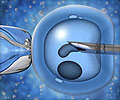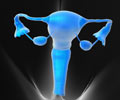Australian women in their 40s are turning to in-vitro fertilization in increasing numbers though there is only one in ten chance of success per treatment cycle.
Births of test-tube babies are booming, spurred by Medicare changes after earlier Government moves to discourage older couples from undergoing a treatment with little chance of success.The average age of women having fertility treatment in 2005 was 35.5 years, slightly higher than three years previously. But the proportion of women older than 40 having treatment increased by a full percentage point to 15.3 per cent, Australian Institute of Health and Welfare figures published today show.
Babies conceived through assisted reproduction in Australia jumped overall to 8500 last year, a rise of nearly 40 per cent in two years, said Michael Chapman, an adviser to the institute on fertility statistics.
The Federal Government had proposed to limit Medicare payments to women older than 42 having fertility treatment because of very low success rates.
The Government backed off in the face of public criticism, but the controversy appeared to stimulate ever more couples to come forward for treatment, Professor Chapman said.
"It is very hard to say no," he said, even though the proportion of successful births per treatment cycle declined from 26 per cent for women in the early 30s to less than 9 per cent in women in their early 40s and less than 2 per cent in the over-45s.
Advertisement
The figures in the institute's report highlight women's age in tracking success rates of fertility treatment. But Dr Clark said it was not widely known that couples' chances of success dwindled even faster when the man was older than 40.
Advertisement
Dr Clark urged couples to see a specialist if they were not achieving pregnancy after six months.
Professor Chapman said the Medicare safety net's effect in reducing out-of-pocket costs was making fertility treatment more available to those on lower incomes, even though couples with private insurance would still typically face bills of about $1000.
Another development was the rise in the proportion of single embryos being implanted. This showed doctors and patients were responding to evidence that multiple embryo implants increased the risk of premature birth and conditions such as cerebral palsy. Multiple embryos had been implanted in the belief that this improved success rates but single implants were now achieving similar birth rates without the increased risk of problems, Professor Chapman said.
A spokeswoman for the Minister for Health, Tony Abbott, said the Government decided after a review into assisted reproduction technology not to limit funding for the treatment by maternal age or the number of cycles.
"It is clear that some services do not have good success rates for all people. It is better that both patients and their doctors understand the risks and benefits of different treatments before deciding what to do," she said.
Source-Medindia
GPL/V










